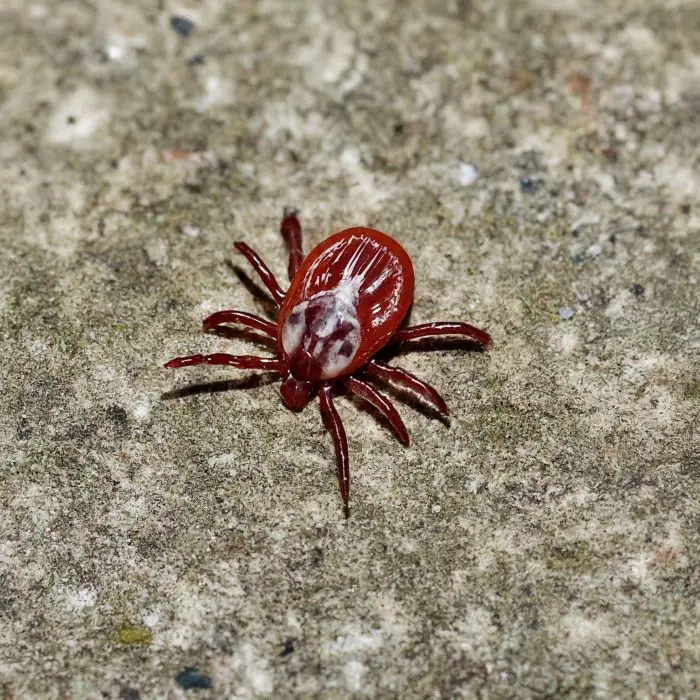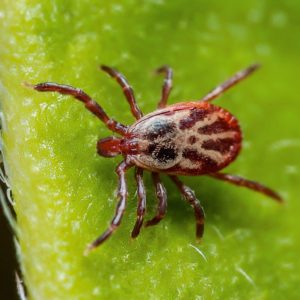Imagine stepping outside and noticing small red bugs crawling on your concrete surfaces. These fascinating creatures are actually clover mites, and they’re not insects, but arachnids.
In this article, we’ll explore the intriguing world of clover mites, uncovering their secrets and debunking misconceptions. Join us on this journey as we delve into their characteristics, behavior, and environmental role, and see your concrete in a whole new light!
What are these Tiny Red Bugs on Concrete?
The small red-colored bugs you may notice on your concrete floors or driveway are likely clover mites. Clover mites are small arachnids, not insects, and their small size and red color often lead people to think they are insects.
Important Note: If you're tired of pests and want a reliable solution, then you should definitely consider seeking help from a professional pest control company. DIY solutions can be effective, but if you're dealing with a significant pest infestation, you don't want to rely solely on DIY methods. Pest control companies typically don't charge huge fees. You can fill out this form to receive free quotes from the top local pest control companies, and compare the quotes and see for yourself. Then, finally, your pest problems will be eliminated for good.
Their body color is typically reddish-brown or dark red, and they have four pairs of legs. They are oval-shaped and about 0.75 mm long.
During the spring and fall seasons, these tiny creatures can be found in large numbers, especially since they can crawl all over the cement.
Although clover mites are incredibly small in size, they are intriguing creatures that contribute to the ecological balance of the natural world.

How to Get Rid of Clover Mites
Physical Removal
To get rid of clover mites through physical removal, use a damp cloth or sponge to gently wipe them off the cemented floor. Avoid crushing them, as they can leave a reddish stain. This can be an effective method for immediate control of clover mite populations on outdoor surfaces.
Barrier Methods
Creating a barrier around the perimeter of your cement floors can help prevent clover mites from accessing them. You can use insecticide dust, diatomaceous earth, or a natural repellent like cinnamon or cedar oil to create a barrier. Apply these substances in a band or ring around the area you want to protect.
Prune Vegetation
Clover mites feed on vegetation, so trimming back any tall grass, weeds, or other vegetation close to your cemented floors can reduce their food source and discourage their presence.
Chemical Insecticides
There are chemical insecticides available that are specifically formulated to control clover mites.
Choose an insecticide that is safe to use indoors, such as permethrin, diazinon, bifenthrin, or chlorpyrifos, and apply it directly to the mites.
The process should be repeated as needed until the mites are gone. When using chemical treatments, follow the instructions on the label carefully and take appropriate safety precautions. Clover mite populations can be effectively controlled with insecticides to prevent their return.
Clover Mite Repellant Plants
Although no specific plant can repel clover mites, there are certain plants that are less attractive to them and may help deter their presence.
Roses, Mint, Lavender, Geraniums, Chrysanthemums, Yews, Junipers, Spruces, Arborvitaes, Marigolds, Rosemary, and Sage.
These flowering plants and shrubs typically have strong scents or textures that clover mites find unappealing and are considered as clover mite resistant plants.
Seek Professional Help
Remember, seeking professional help for tiny bugs on concrete early can prevent pest issues from escalating. You may want to consider hiring a professional pest control service if you have a large infestation of clover mites or if you do not feel comfortable using insecticides.
If you are concerned about tiny pests infesting your concrete surfaces then don’t wait until it’s too late – fill out our form for professional pest control assistance today and reclaim your space.
How to Avoid Future Infestations
Seal cracks and gaps
Inspect your concrete surfaces regularly for cracks and gaps where clover mites and other pests can enter. Use caulking or sealant to fill in any openings to prevent their entry.
Maintain cleanliness
Keep your concrete surfaces clean and free of debris, such as leaves, grass clippings, and other organic matter, which can attract clover mites. Regularly sweep or hose down your patio or other concrete areas to remove potential food sources and hiding spots.
Apply insecticides
If clover mites persist despite preventive measures, you may need to use insecticides specifically labeled for clover mite control. Be sure to follow the instructions carefully and apply the insecticide only to affected areas to minimize environmental impact.

Frequently Asked Questions
What are these Tiny Red Bugs on My Patio?
The small red mites you may be seeing on your patio could be clover mites. Clover mites are very small arachnids belonging to the spider mite family, and their bright red color makes them easy to spot outside. They are often seen crawling on cemented floors, especially in sunny places, and are usually smaller than a pinhead, about 0.75 mm in size.
Are Tiny Red Bugs on Concrete Harmful to Humans?
Clover mites are generally not harmful to humans. They do not bite, sting, or transmit diseases to humans. Although their presence can be considered a nuisance, especially when they invade homes, their tiny size and bright red color can be visually off-putting, especially when they congregate in large numbers.
Are Clover Mites the same as Red Spider Mites?
Though they are both members of the class Arachnida and can look similar, clover mites are not the same as red spider mites. In addition to clover mites (Bryobia praetiosa), there are red spider mites (Tetranychus spp.) that belong to different families.
How do you get rid of little red bugs on concrete?
To manage clover mite infestations in buildings, seal cracks, keep the area clean, and use labeled insecticides as a last resort. Consult a pest control professional for accurate identification and appropriate management options.
Does baking soda effectively kill clover mites on concrete?
Baking soda can indeed kill clover mites on concrete. Mixing baking soda with water to form a paste and applying it to affected areas can disrupt the mites’ cellular structure, effectively eliminating these tiny bugs. However, it’s wise to test a small area first and consider consulting a pest control professional for persistent infestations.
Conclusion
While little spider-like bugs on concrete may initially spark curiosity or concern, they are most likely harmless clover mites. Understanding their characteristics and behavior can help dispel misconceptions.
Whether you choose physical removal, barrier methods, or seek professional help, managing clover mites can be done effectively. So, go ahead, embrace the intriguing world of these tiny creatures, and keep your cemented floors bug-free!

